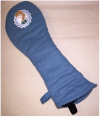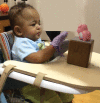Early childhood constraint therapy for sensory/motor impairment in cerebral palsy: a randomised clinical trial protocol
- PMID: 26644127
- PMCID: PMC4679990
- DOI: 10.1136/bmjopen-2015-010212
Early childhood constraint therapy for sensory/motor impairment in cerebral palsy: a randomised clinical trial protocol
Abstract
Introduction: Cerebral palsy (CP) is the most common physical disability in childhood. It is a disorder resulting from sensory and motor impairments due to perinatal brain injury, with lifetime consequences that range from poor adaptive and social function to communication and emotional disturbances. Infants with CP have a fundamental disadvantage in recovering motor function: they do not receive accurate sensory feedback from their movements, leading to developmental disregard. Constraint-induced movement therapy (CIMT) is one of the few effective neurorehabilitative strategies shown to improve upper extremity motor function in adults and older children with CP, potentially overcoming developmental disregard.
Methods and analysis: This study is a randomised controlled trial of children 12-24 months corrected age studying the effectiveness of CIMT combined with motor and sensory-motor interventions. The study population will comprise 72 children with CP and 144 typically developing children for a total of N=216 children. All children with CP, regardless of group allocation will continue with their standard of care occupational and physical therapy throughout the study. The research material collected will be in the form of data from high-density array event-related potential scan, standardised assessment scores and motion analysis scores.
Ethics and dissemination: The study protocol was approved by the Institutional Review Board. The findings of the trial will be disseminated through peer-reviewed journals and scientific conferences.
Trial registration number: NCT02567630.
Published by the BMJ Publishing Group Limited. For permission to use (where not already granted under a licence) please go to http://www.bmj.com/company/products-services/rights-and-licensing/
Figures






References
-
- Bhasin TK, Brocksen S, Avchen RN et al. . Prevalence of four developmental disabilities among children aged 8 years-Metropolitan Atlanta Developmental Disabilities Surveillance Program, 1996 and 2000. MMWR Surveill Summ 2006;55:1–9. - PubMed
-
- Cruz M, Jenkins R, Silberberg D. The burden of brain disorders. Science (New York, NY) 2006; 312:53–53. - PubMed
-
- Tachdjian MO, Minear Wl. Sensory disturbances in the hands of children with cerebral palsy. J Bone Joint Surg Am 1958;40-A:85–90. - PubMed
Publication types
MeSH terms
Associated data
Grants and funding
LinkOut - more resources
Full Text Sources
Other Literature Sources
Medical
Miscellaneous
